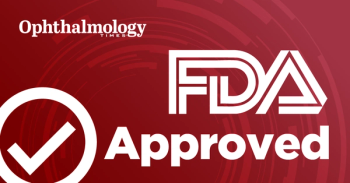
European Medicines Agency to assess semaglutide for link to NAION
Key Takeaways
- The EMA is reviewing Danish studies linking semaglutide to increased NAION risk, following a request from the Danish Medicines Agency.
- Semaglutide, a GLP-1 receptor agonist, is approved for obesity and type 2 diabetes treatment in Europe and the US.
The Danish Medicines Agency requested the EMA's Pharmacovigilance Risk Assessment Committee review reports on the vision-threatening condition.
The European Medicines Agency (EMA) announced that it will review 2 Danish studies which indicate there may be a link between semaglutide injection drug Ozempic (Novo Nordisk) and non-arteritic anterior ischemic optic neuropathy (NAION). The decision comes after the Danish Medicines Agency requested the EMA’s Pharmacovigilance Risk Assessment Committee (PRAC) to assess the register-based studies, both from the University of Southern Denmark. Reporting from Reuters1 stated that the studies, published in December, indicate that semaglutide use more than doubles the likelihood that patients will develop NAION. The patient information included both Danish and Norwegian registry-based data; research was performed in collaboration with the Norwegian Institute of Public Health, the Danish Medicines Agency said.2
The EMA stated that prior research had not been strong enough to suggest a potential link between semaglutide and NAION, but these most recent Danish studies may hold new information.1 In Europe and the US, semaglutide is approved to treat obesity and type 2 diabetes.
Line Michan, director of the department of Pharmacovigilance at the Danish Medicines Agency, explained the decision to request a review from PRAC. “In the past 6 months, we have evaluated reports and studies involving the serious eye condition known as NAION in collaboration with our European colleagues,” she said.2 “These new register-based studies provide comprehensive data from Danish and Norwegian registers that the European Pharmacovigilance Risk Assessment Committee may now consider. Therefore, we will now request PRAC to assess the new studies.”
In July, researchers from the Harvard T.H. Chan School of Public Health, the Department of Ophthalmology, and Neuro-Ophthalmology Service Massachusetts Eye and Ear, Harvard Medical School, in Boston, also reported on NAION. The authors cited anecdotal experience that suggested that semaglutide, a glucagon-like peptide 1 receptor agonist (GLP-1 RA), may be associated with development of NAION.3
Exploring the potential association is vital, in large part, because the use of GLP-1 RA drugs has been rapidly increasing. In the US, weekly new-to-brand prescriptions of GLP-1 RA drugs has increased by about 60% from 2021 to 2023, according to figures from Novo Nordisk.
Michan noted that NAION is extremely rare, and that investigators are still working to establish whether semaglutide use has a causal or correlational relationship to occurrence of NAION.2
References
Carlsson IY. Novo Nordisk's Ozempic faces EU review for potential eye disease connection. Reuters. Published 18 December, 2024. Accessed 20 December, 2024.
https://www.reuters.com/business/healthcare-pharmaceuticals/novo-nordisks-ozempic-faces-eu-review-potential-eye-disease-connection-2024-12-18/ Suspicion of rare eye condition from Ozempic use to be investigated further. Danish Medicines Agency. News release. Published 16 December, 2024. Accessed 20 December, 2024.
https://laegemiddelstyrelsen.dk/en/news/2024/suspicion-of-rare-eye-condition-from-ozempic-use-to-be-investigated-further/ Charters L. Semaglutide may be associated with non-arteritic ischemic optic neuropathy (NAION). Ophthalmology Times Europe. Published 9 July, 2024. Accessed 20 December, 2024.
https://europe.ophthalmologytimes.com/view/semaglutide-may-be-associated-with-non-arteritic-ischemic-optic-neuropathy-naion-
Newsletter
Don’t miss out—get Ophthalmology Times updates on the latest clinical advancements and expert interviews, straight to your inbox.
















































.png)


